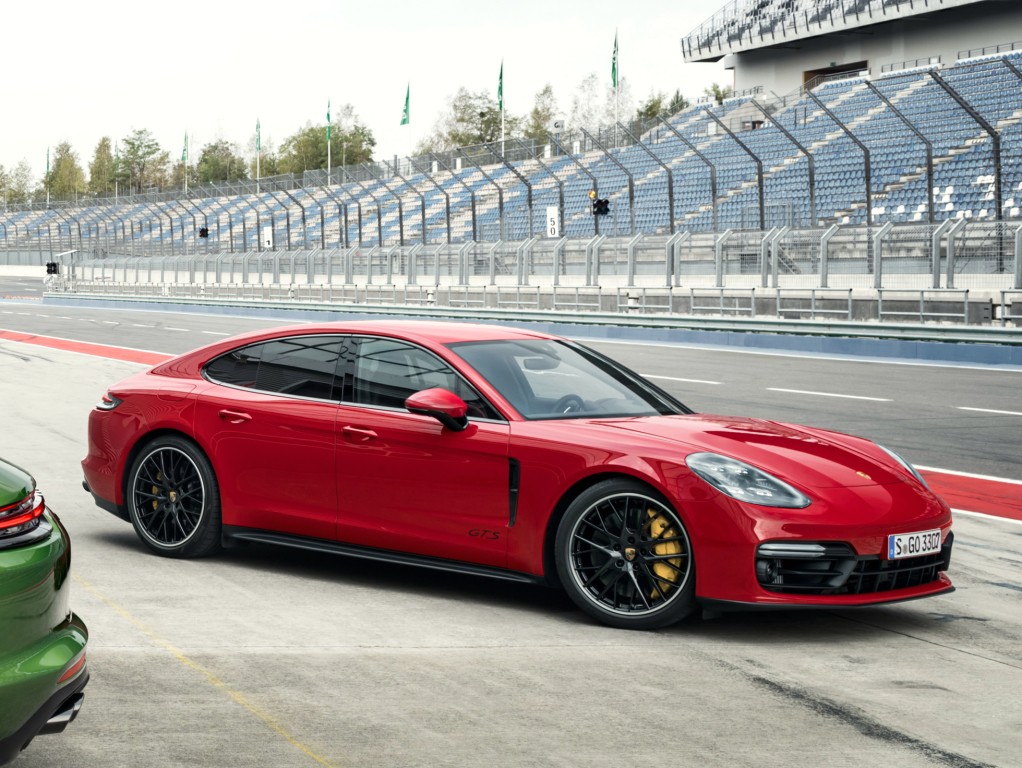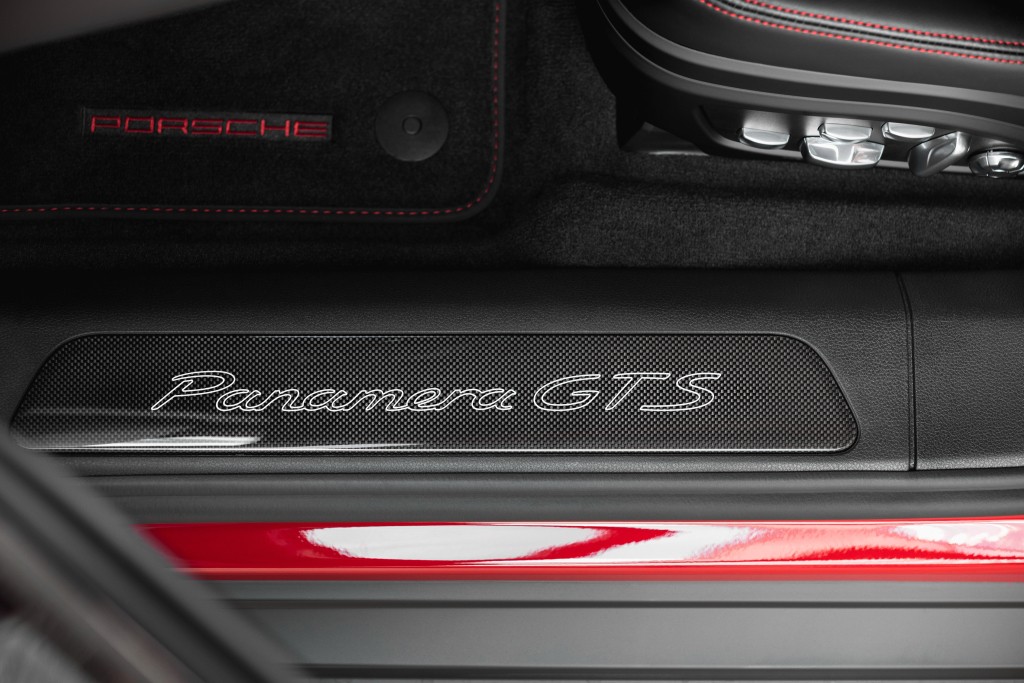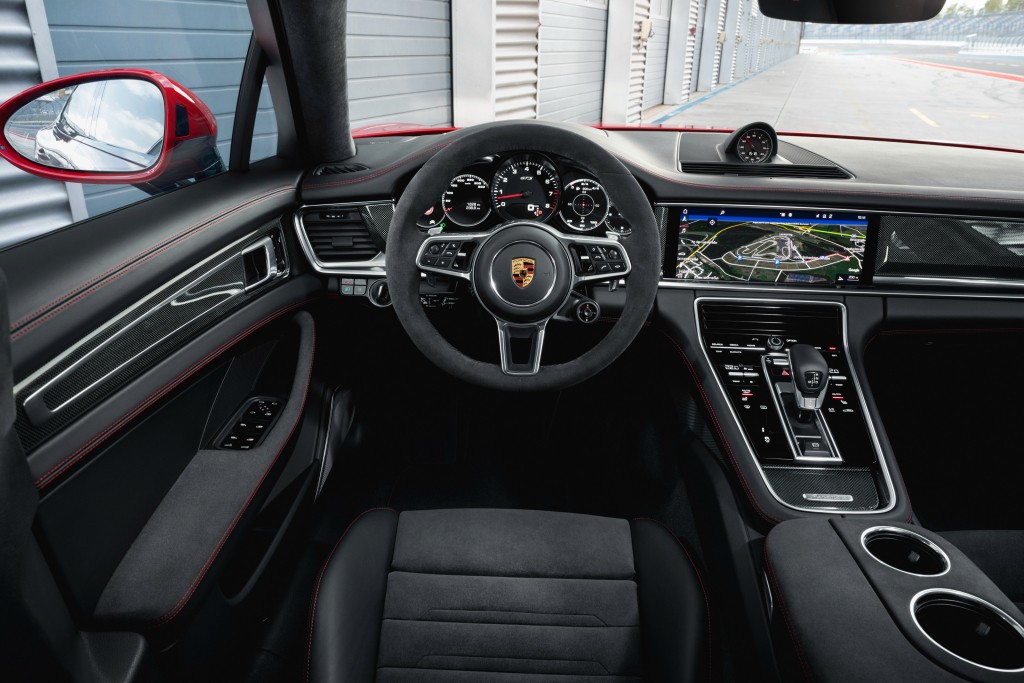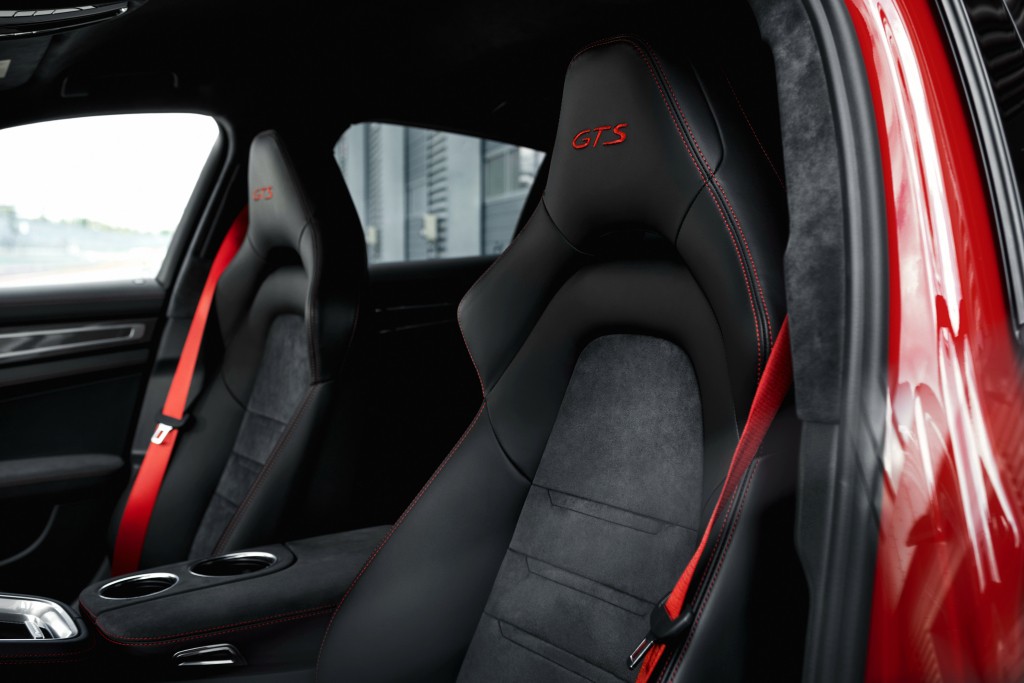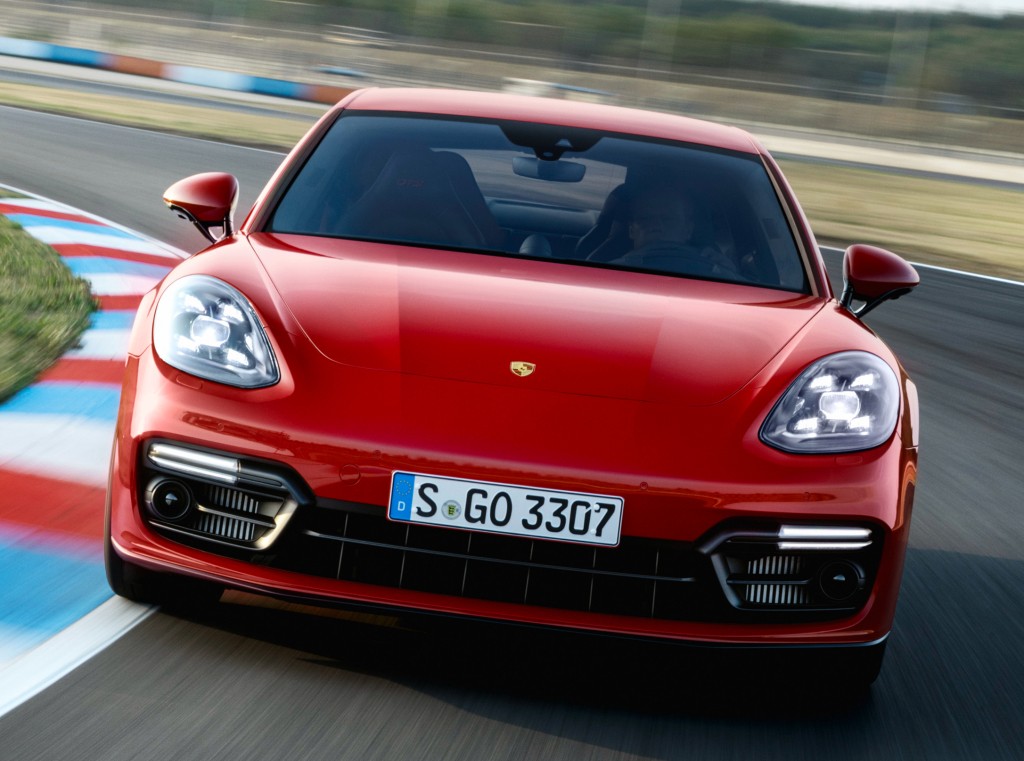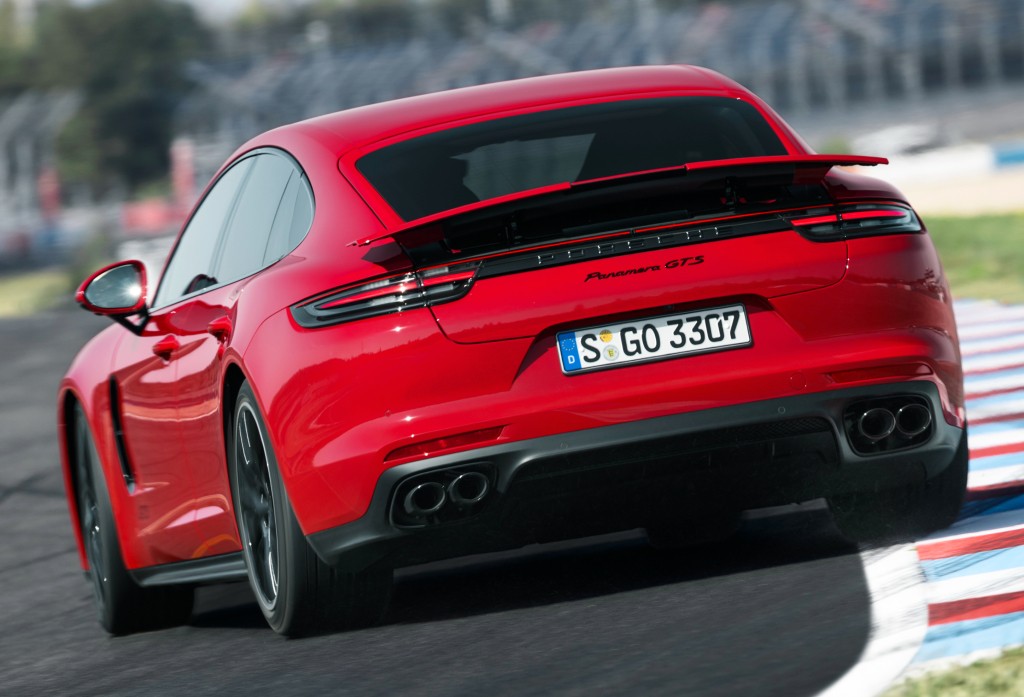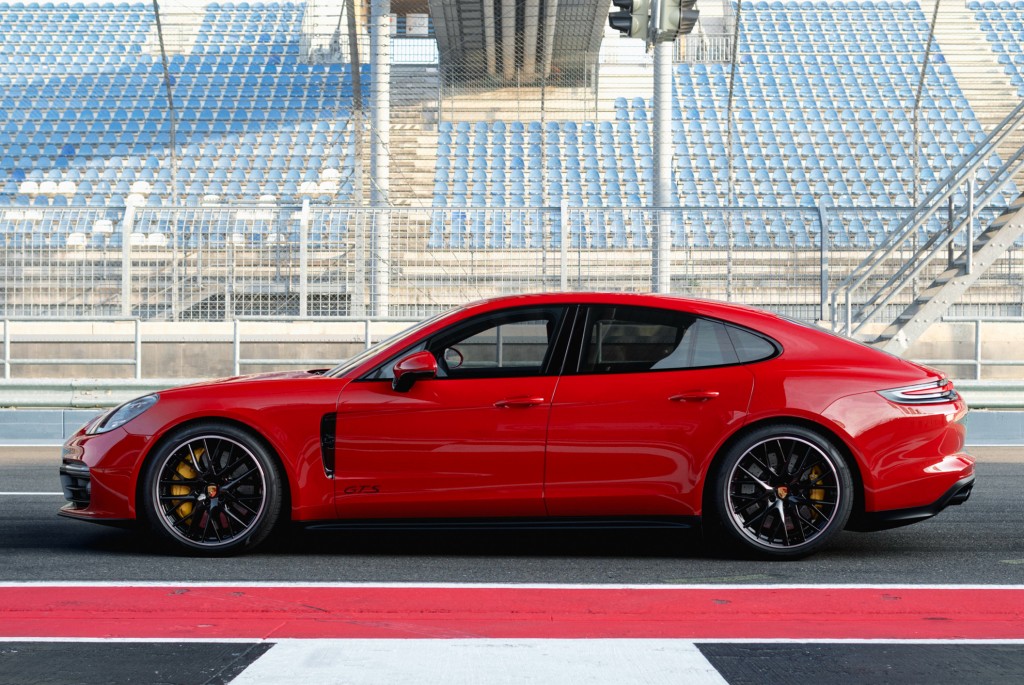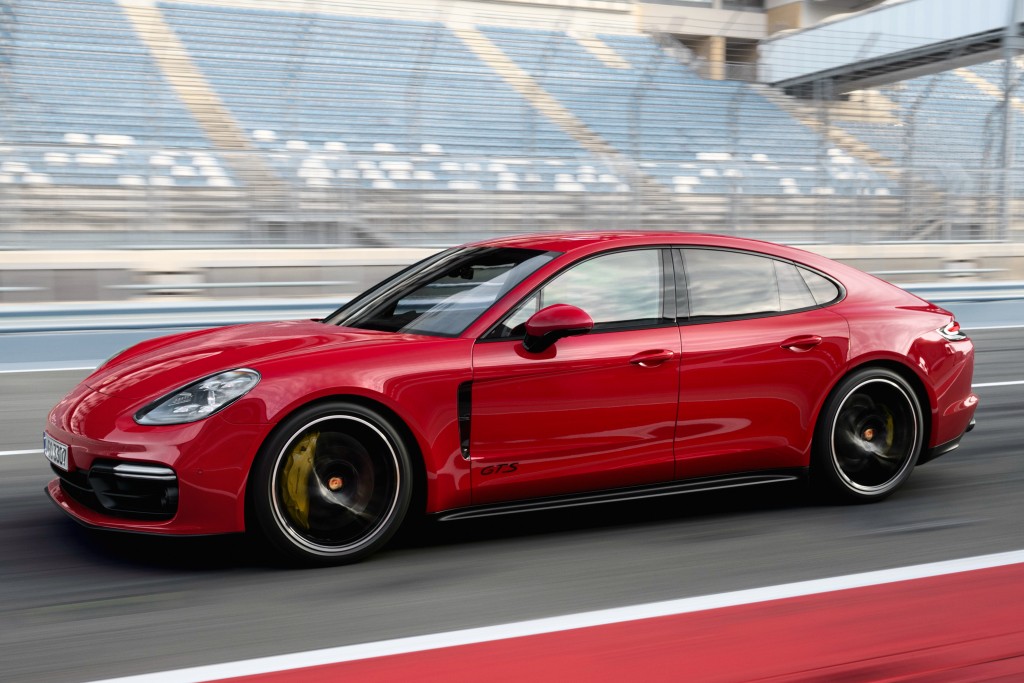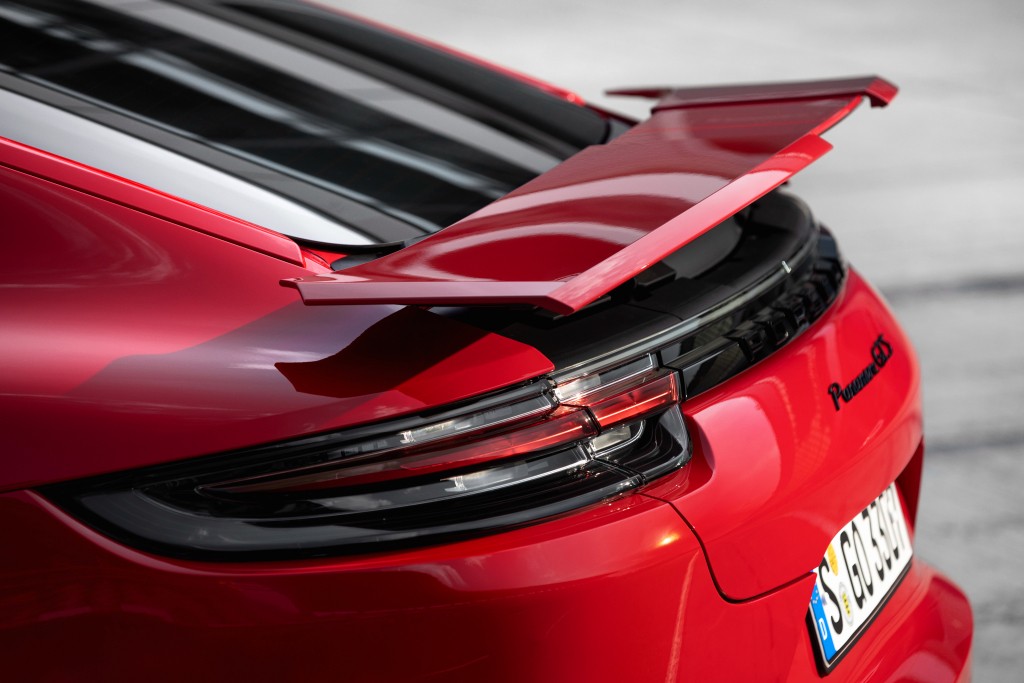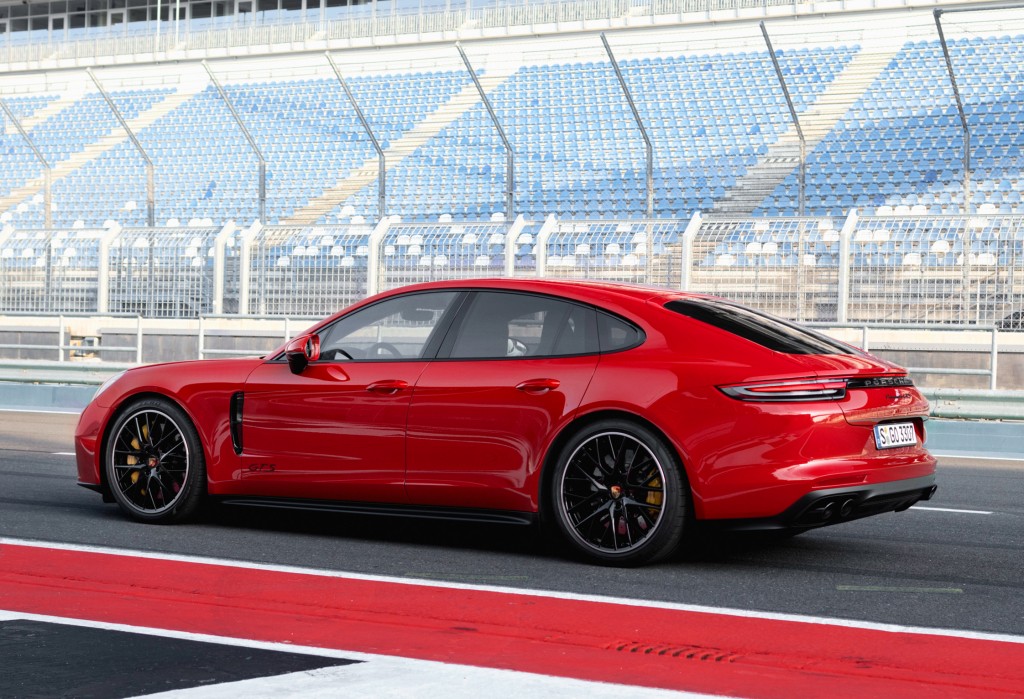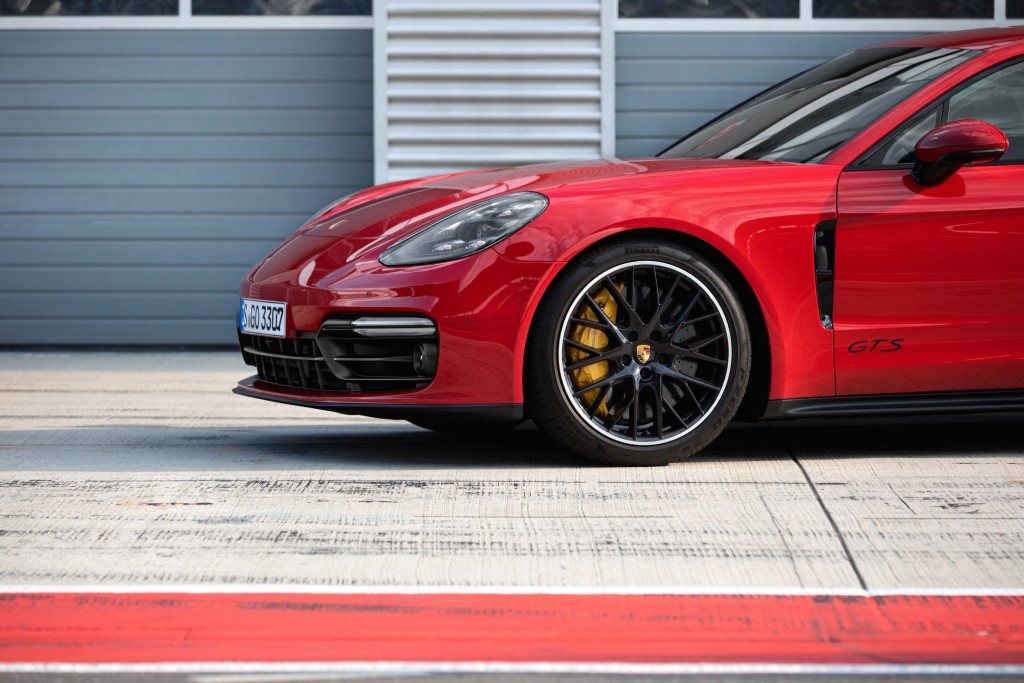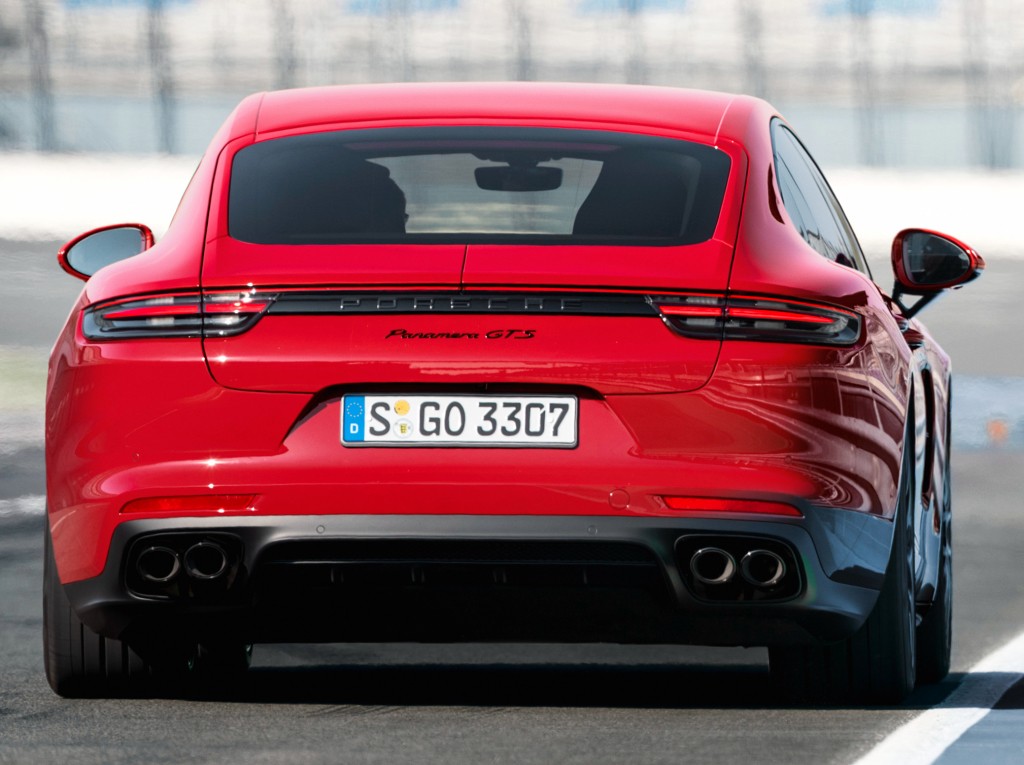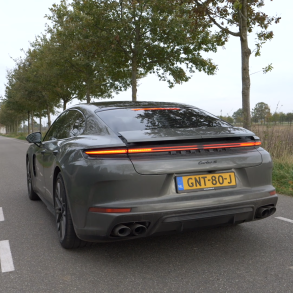(2019 – 2020) Porsche Panamera GTS – The Ultimate Guide
The current 971 generation Porsche Panamera is the latest model from the German marque to receive their always much anticipated, GTS treatment. For the 2019 model year, the second-gen Panamera is now a beneficiary of the badge – which actually stands for ‘Gran Turismo Sport’ – that has come to represent the pragmatist’s choice of Porsche automobile. The Panamera GTS is also now available in a long-roof wagon body style, dubbed the Sport Turismo. In totality, this is the vehicle I will be writing about – the 2019 Porsche Panamera GTS Sport Turismo.
Traditionally speaking, the GTS version of any Porsche has typified a “sport-plus” version of a mid-level trim within the model range, and the new Panamera remains loyal to this trend. What this means is that the Panamera GTS slots into its familiar position between the S and Turbo variants. Many – whether you want to call them enthusiasts, purists, or pragmatists – consider the GTS to really hit the sweet spot in terms of being the archetypal driver’s car, as far as Panameras are concerned…
So while this does mean that it doesn’t come with the most powerful engine in the lineup – the Turbo S predictably fills this space – the GTS’s twin-turbocharged V8 engine is no slouch and still very much capable of producing adrenaline pumping moments despite the Panamera’s relatively bulky frame. With an output of 453-horsepower and 457 lb-ft of torque, the lively powerplant is mated to an eight-speed dual-clutch PDK transmission, complemented by a standard all-wheel drive configuration.
However, the GTS has always instilled the philosophy that power is just one element of something that is greater than the sum of its parts. Standard fare with the car includes an adaptive air suspension, retuned dampers, and stiffer anti-roll bars to make the GTS the most agile variant in the line up.
The introduction of the GTS to our market means that there are now 18 variants of the Panamera available, amongst which there are six powertrain and three body styles choices. The GTS model is available in two of the aforementioned configurations – the ‘fastback sedan’ base model, and the ‘shooting-brake estate’ Sport Turismo. The Porsche Panamera GTS Sport Turismo particularly stands out amongst the crowd with its unique blend of sensibility, egalitarianism and personality.
The Porsche Panamera GTS Sport Turismo does not have its own unique power plant, but is the beneficiary of a detuned Panamera Turbo engine instead. The engine remains a 4.0L twin-turbocharged V8 which outputs 453-horsepower and 457 lb-ft of torque in its GTS guise. While the Turbo’s less-restricted unit produces 550-horsepower and 567 lb-ft of torque in comparison, the GTS’s performance figures are nothing to balk at.
Quite far from it really, considering that the GTS Sport Turismo is capable of 0-100 km/h in just 4.1 seconds; this is 0.3 seconds faster than the lower-tier 4S which produces 20 less horsepower.
Things can really get dialed to the nines using the launch-control software which comes as part of the standard Sport Chrono package – enabling it will allow 0-100 km/h sprints to easily break into the top of the 3 second range, while 0-60 mph should achievable in approximately 3.5 seconds.
Porsche claims a top speed of 180 mph for the GTS Sport Turismo. The acceleration figures are identical for both body styles, while the sedan’s top speed is an arguably insignificant, 2 mph higher. Playing around with the different drive modes – Normal, Sport, Sport Plus and Individual – will yield a variety of different results and characteristics such as throttle response, exhaust notes and shifting speed.
Speaking of shifting, the refined 8-speed PDK transmission is the perfect accompaniment to the rest of the drivetrain. The instantaneous shifts – and the absolute precision in which they are completed – are a defining feature of the GTS Sport Turismo and the remarkable driving experience it provides.
The car also borrows the Turbo version’s higher final-drive ratio – which is 3.36:1, compared to 3.15:1 used in the other variants – which results in improved acceleration off-the-line or in the lower range.
Conventional thinking would deduce that a 4,605 lb, all-wheel-drive luxury estate with a robust 4.0L twin-turbocharged V8 should be gas-guzzler, to put it kindly. However, this is no ordinary car. Porsche remains concerted in its mission to optimize fuel efficiency without sacrificing performance in all its vehicles, and the Panamera is certainly no exception.
Helping the GTS Sport Turismo attain an impressive 10L / 100 km combined fuel economy is the standard stop-start system and a ‘coasting’ feature that imperceptibly shifts the car into neutral in certain off-the-throttle scenarios. Naturally, more spirited driving – particularly in Sport or Sport+ modes – will concede some efficiency in this regard.
Even for those in the know about the car, the Porsche Panamera GTS Sport Turismo is still likely surprise most drivers with its agility at the onset. Afterall the car tips the scales at 2,089 kg (4,605 lbs) but still manages to stay nimble and poised when pushed.
As genuinely impressive as it is at being tossed around, the car ultimately does obey the laws of physics, and its weight and overall dimensions become noticeable in circumstances that expose these supposed short comings.
Some of the greatest perks of having the GTS model, are all the suspension-related options that now come standard. Such features include the adaptive air suspension, which lowers the car by up to 10 mm compared to the 4S. The dampers are also calibrated with a more sporty demeanor in mind, and stiffer anti-roll bars (20 percent and 30 percent more in front and rear, respectively) further enhance the car’s reaction time to steering inputs. Porsche Traction Management (PTM) is also more rear-biased to allow the car to rotate at the rear more freely.
With the GTS badge proudly displayed on the rear bumper (and other fixtures, if desired), buyers will know that their car is a pretty impressive package in its standard form. However, as is the case with every other Porsche, the car – and ultimately your experience with it – can really start to differentiate itself by indulging in the plethora of optional features.
The illustrious Porsche Ceramic Composite Brakes (PCCB) continue to be the biggest highlight, increasing braking performance notably. At a cost of $8,970, PCCB will replace the standard cast-iron rotors with 16.5 inch rotors in the front and 16.1 inch rotors in the rear. The optional Rear Axle Steering incl. Power Steering Plus package ($1,620), improves low-speed agility and enhances stability and turn-in at higher speeds.
Another notable performance option is Porsche Dynamic Chassis Control Sport (PDDC) incl. Porsche Torque Vectoring Plus (PTV+). PDDC uses electromechanical actuators to actively adjust the stiffness of the front and rear anti-roll bars while PTV+ allows for variable drive torque distribution at the rear wheels with an electronically controlled rear differential. In combination, these features improve the car’s cornering abilities and dials out some of the understeer.
The Porsche Panamera GTS Sport Turismo comes standard with 20” wheels painted in black, and wrapped in 275/40 (front) and 315/35 (rear) all-season tires, which are the same spec as the Turbo model. A generous selection of optional 21” Exclusive Design and SportDesign wheels are available for up to an extra $2,850.
While the Sport Turismo certainly gives the impression that it is more utilitarian than the regular Panamera, it actually only has 50L more cargo space. This makes the choice between the two body styles mostly a matter of personal taste, rather than practicality.
Those who are requiring the latter in greater effect should be looking into the Macan or Cayenne, anyway. With regards to the former, I have to say that the Sport Turismo’s sleek wagon configuration is quite frankly, eye catching and indeed a key selling point of the car. I am a big fan of estates, so I may be a bit biased.
As is the case with other Porsche models, the Sport Design package for the GTS adds a number of High Gloss Black trim pieces to accent the exterior. The air intakes and c-blades on the front bumper, rear diffuser and side mirrors in this color add a really sharp contrast while further proclaiming the presence of the GTS. Satin Black 20” wheels come standard, but for the best chemistry with the Sport Design package, you should opt for the 21” High Gloss Black wheels for an additional $2,840.
The interior comes with a generous offering of GTS logos, brushed-aluminum accents, and Alcantara throughout. The optional Leather / Alcantara GTS Interior package ($3,480) can make the distinction that much more apparent with contrasted stitching, seatbelts, and instrument cluster. I’m personally a big fan of this option, especially in Carmine Red.
Also optional for the first time in 2019 models, is Heads-Up Display ($1,720) which projects relevant driving information on the windshield area above the instrument cluster. It does so in a way such that the information appears to be coming at you from outside the front of the vehicle – in an augmented reality kind of way. The information encompasses a wide range of customizable data related to performance, hazard warnings, navigation, and more.
Pictures
Press Release
Atlanta, Georgia. Porsche today announced the forthcoming addition of two sporty models to its Panamera range. The new Porsche Panamera GTS and Porsche Panamera GTS Sport Turismo models add new breadth to the lineup for customers seeking a sportier driving experience positioned between the Panamera 4S and Panamera Turbo variants.
A four-liter twin-turbo V8 engine generates a peak output of 453 horsepower from 6,000 to 6,500 RPM and peak torque of 457 lb.-ft. from 1,800 to 4,500 RPM. As compared to the previous Panamera GTS with a naturally aspirated 4.8-liter V8, the current engine offers an increase of 13 horsepower and an additional 73 lb.-ft. of torque.
The engine, which sends power to all four wheels through an eight-speed PDK dual-clutch transmission via the standard Porsche Traction Management (PTM) all-wheel-drive system, allows both the Porsche Panamera GTS and Porsche Panamera GTS Sport Turismo models to accelerate from 0 to 60 MPH in 3.9 seconds. The former reaches a top track speed of 181 mph or 179 mph for the latter.
As is typical with any Porsche “GTS” model, the standard equipment list and chassis setup are oriented with enthusiastic driving in mind. The chassis now sits 0.39 inches (10 millimeters) lower than other Panamera models. The Porsche Adaptive Suspension Management (PASM) dampers, which are included as part of the standard Air Suspension, are recalibrated for these models. Large brakes (390 millimeters in diameter at the front, 365 millimeters in diameter at the rear) provide exceptional stopping power.
Other standard equipment highlights include the Sport Chrono package, a Sport Exhaust system including tailpipes in black, the Sport Design package with black exterior elements, and black 20-inch Panamera Design wheels. Matching the aggressive exterior aesthetic, black Alcantara ® and anodized aluminum lend an athletic look to the interior.
A heated multifunction sport steering wheel in Alcantara trim and the Connect Plus module for a wide range of digital services are also standard. With the optional GTS Interior package, drivers can contrast elements of the interior including stitching, GTS logos, and the tachometer in either Carmine Red or Chalk.
In conjunction with the new model announcement, Porsche also announced that an optional head-up display with multiple configurations will become available for ordering on all models in the Panamera line-up.
A first for the Panamera: head-up display with many configuration options
The GTS models offer all the same innovations as the second-generation Panamera range. These include the digital Porsche Advanced Cockpit, optional assist systems such as Porsche InnoDrive including adaptive cruise control, and optional rear-axle steering. The GTS also offers a highlight that is new to the entire Panamera range – the head-up display. The display can be configured by the driver and projects relevant information directly into their direct line of sight in color.
Even better for day-to-day driving: the first-ever Panamera GTS Sport Turismo
As is tradition at Porsche, GTS derives from Gran Turismo Sport and several historical Porsche models. Porsche’s first road-approved sports car, the 904 Carrera GTS, was launched in 1963. This was followed by the 924 GTS and 928 GTS models, which cultivated the concept throughout the 1980s and 1990s.
In 2007, the GTS nomenclature celebrated its revival with the Carrera GTS. The first generation of the Panamera GTS followed in 2011. Now, the new Panamera GTS is available in both sedan and Sport Turismo body styles. With a large lift gate, low loading edge, increased cargo capacity, and 4+1 seating configuration, the new GTS variant is the perfect combination of everyday practicality and outstanding performance.
The new Panamera GTS models are available to order now. In the United States, the Panamera GTS carries a starting MSRP of $128,300; the Panamera GTS Sport Turismo is available with a starting MSRP of $134,500. Both prices exclude $1,050 for delivery, processing, and handling and are expected to arrive in U.S. dealerships in the second half of 2019.


